Christian's Film Canon: 10 Must See Films
As Much as I Hate the "List of Films You Are Supposed to Like" ...
Wait?! Christian is Writing Film Canon Lists?!
If you’ve been reading this Newsletter for any amount of time, you know that I am an opponent of the semi-official “List of Films You are Supposed to Like” that seems to dominate how and what most modern film critics think about films. I’m not a fan of using lists as a way of excluding things that others value and film critics often use these lists for exactly that purpose. There are more films worth watching than any person can watch in a lifetime and there are new ones being made every day.
I’ve spent a lot of time thinking about this issue over the past two years and the real problem that I have is that the “List of Films You are Supposed to Like” isn’t just a list of recommendations. It’s a kind of mental prison. It’s too pat and agreed upon and for non-filmic reasons.
Aha! There’s the crux of my complaint. It’s that this list is a kind of critical social pressure used to discern whether a conversant is a true cineaste. It’s like when critics use the term diegetic when referring to music. What they are describing is that the music the audience hears is also being heard by the characters in the film. It’s a film criticism term that evolved from the Greek term diegesis (διήγησις) by which Socrates (in Plato’s Republic book 31) to distinguish “showing” (mimesis aka μίμησις) versus “telling” (διήγησις). Diegetic narratives where ones where we are “told” what happens. In literature, this often includes internal monologues of characters where their motivations are told rather than shown. If one wants to be really specific, the only things that are truly diegetic in film are voice overs and moments like when Ferris Bueller or Deadpool break the fourth wall.2
While that’s all well and good and super pedantic, the fact is that people who work in film call music the characters can hear “source” and music that only the audience hears is called “score.” Here we can read how the Music Editor of The Simpsons refers to the use of music. You see words like source, score, montage, and musical production number. You even see the neologism “scource.” What you don’t see is the term diegetic. Why? Because that’s a misappropriated term used by academic film critics that demonstrates more that they ought to “touch celluloid” more than the lack of knowing the term diegetic says a viewer doesn’t understand film.
Okay, okay, this isn’t a post about why I dislike pretention or the use of lists to exclude people. This is a post where I’m supposed to be recommending films that I think are absolute must see films and I still haven’t answered why I’m doing one given my reservations in general. The answer to this question is pretty simple.
In my day job, I’m a data analyst, but as I’m finishing my Ph.D. I’m also an Adjunct Professor at Boise State University. It’s a job I love. I hope to be able to do it for as long as I can and I really appreciate that my current job lets me take the teaching job as well. I get to meet a lot of wonderful students and help them learn how complex political science really is. I get to share my love of political science, to be a mentor, and to express my almost obsessive love for all aspects of popular culture. Readers know that I love ALL of popular culture. It doesn’t matter if it’s sports, video games, comic books, movies, television, musicals, role playing games, or a host of other topics. Popular culture is culture and I absolutely love to share my thoughts about it.
Unlike many professors, my pop cultural references aren’t limited to the films of the 80s-00s, references that many of the students will miss. No, my references are from the 1920s (earlier for non-filmic references) to today and yes the students miss many of the older ones, but they know I don’t obsess about “my” generation having the best popular culture. My generation’s stuff was great, but so too is so much more.
At the end of each semester, I give a review session for the final and at the end of it I give time for an AMA session where they can ask any question except for whom I voted. Since I study polarization, my focus is building connections beyond politics so we can talk about complex and controversial issues in the classroom. If anyone saw me as “against the other side,” then my goals would not be met. I want all of my students to know I am on THEIR side. I want them all to succeed and be happy and I am a mentor to all of them. I had great mentors who ran the gamut politically and I want to follow their lead.
In my most recent AMA, one of my students asked what my favorite film was. Okay, that’s not exactly true. In both of my AMA sessions, one for each section, I was asked what my favorite film was. I told the students, honestly, that I don’t have a singular favorite film, but that I would put together two lists for them. One would be 10 Films They Must See and the other is 10 Great Christmas Films.
That’s why I’m doing this list. Today’s list is 10 Films You Must See and it will cover some familiar ground for cineastes, but maybe for some unfamiliar reasons. With the Christmas Movie List, I might go a bit off the typical path. My wife and I have a list of films we watch every Christmas season and it includes a couple of atypical films. No, I’m not including Die Hard as an atypical Christmas choice. As much as people try to be edgy by saying with a touch of forced irony that it’s their favorite Christmas film, the fact is that it is a great Christmas film. The core message is about love and family and bringing a family back together. It is a remarriage film of the first order, but liking it as a Christmas film (sincerely or ironically) isn’t atypical. What is? That will have to wait for Monday or Wednesday next week.
So…what are 10 Absolutely Must See Films (In No Particular Order)?
Ace in the Hole (1951) — The Noir Selection
Ace in the Hole (affiliate link for streaming or Criterion Edition), aka The Big Carnival, is one of the most important film noir films ever produced. The film was directed by Billy Wilder and co-written by Walter Newman, Lesser Samuels, and Billy Wilder. While many might think of Wilder’s other noir classics like Sunset Boulevard and Double Indemnity as a better exemplars of the genre, I always point to Ace in the Hole as one of the most important noir films ever made because it remains one of the most topical films in the genre and one of the best films to use in a journalism course.
The basic premise is that an unemployed freelance journalist, with a sketchy reputation, discovers a hiker who has become trapped in a cave-in. He finds himself balancing his compassion for the man who needs to be rescued with his own corrupt desire to earn money and prestige. In that balance, he controls the narrative both by hording information and trickling it to other journalists writing stories and by influencing what means are used to rescue the hiker. The interaction of motivations is complex and one that applies to modern media as much as it did in the day. That the modern media now includes random individuals on social media seeking clout only makes the film more topical. As with most Wilder films, there’s a narrative inversion going on. His tragedies have genuinely funny moments and his comedies (like Some Like it Hot) have extremely tragic and dark moments.
Purple Noon (1960) — The French New Wave Selection
Purple Noon is that rarest of films. It is one of the few French New Wave film that I adore. I find too much of the discussion of the French New Wave to be filled with pretention stemming from a desire to demonstrate that the advocates have read Cahiers du Cinéma. I also think films like Jules et Jim and Diary of a Country Priest are trivial, predictable, and lazy attempts at “subverting our expectations.” Don’t even get me started on The Red Balloon. My ire at that film is only matched by my ire with Ulysses Gaze. The Red Balloon is beautifully shot, but I get annoyed with the kid shouting out Ballon! Ballon! to the point of annoyance.
To be fair, I actually do enjoy many French New Wave films, but they are major parts of the “Films You Are Supposed to Like” List. Of those I do enjoy Purple Noon stands at the top. It is a beautiful adaptation of Patricia Highsmith’s The Talented Mister Ripley and is still the best adaptation of that story and it is HEAVILY adapted. It changes the end of the story significantly and it a way that subverts the book. This is ironic because the book subverts the expectations of traditional mystery novels and in subverting the book, the book is a return rather than a subversion of classic tropes. The resolution, and the investigator, is closer to what you would find in a Georges Simenon Maigret novel than it is to Highsmith’s original.
René Clément’s direction is subtle and suspenseful, the cinematography is beautiful, and so too is Alain Delon. The presentation of Ripley in this film, like the narrative of Ace in the Hole, is more topical to modern society than one might think. Delon’s version of Ripley is obsessed with envy and is very much an incel due to his odd personality, a nice contrast to Delon’s physical beauty is his character’s creepiness. The use of color and score are exquisite.
Tinker, Tailor, Soldier, Spy (2012) — The Realistic Espionage Selection
No novel captures the sinister effect that Kim Philby had on the British espionage community than John Le Carré’s Tinker, Tailor, Soldier, Spy and director Tomas Alfredson’s 2012 film adaptation of the novel captures the tone perfectly. Gary Oldman is superb as George Smiley, a character who is partially based on John Bingham, a man who is as surprised and betrayed by his friend’s collusion with the Soviet Union as the real life agents of MI6 and the CIA were. Kim Philby is possibly the most successful “known” spy to ever live. He was not only responsible for the deaths of hundreds (maybe thousands) of Western assets, he operated at the highest levels of British Intelligence and thus corrupted an entire generation’s faith in the ability of institutions to guide people. Le Carré’s letter about Bingham (discussed in the EW article above) demonstrates that loss of faith perfectly.
The film Tinker, Tailor, Solder, Spy captures the suspense and subtle interactions of the intelligence community with a deft hand. Every actor, from Tom Hardy to Gary Oldman, give top notch performances. The film is beautifully shot with a color palette that exemplifies an empire in decline. The fall colors all suggesting that the Wintery Death of Empire is moments away. The best realistic espionage films like The Ipcress File and The Spy Who Came in From the Cold all portray brilliantly the damage that Philby as a spy, and Thomas C. Mann as a statesman, did to Democratic nations and they are all worth watching, but Tinker, Tailor, Soldier, Spy is the perfect gateway film into the genre.
The Andromeda Strain (1971) — The Realistic Science Fiction Selection
It’s hard to write or direct a science fiction story that remains accurate and topical as time passes, but Robert Wise’s direction of Michael Crichton’s The Andromeda Strain does it extremely well. Like many of the films on the list, this one remains surprisingly topical. After a satellite comes crashing to Earth a small New Mexico town experiences a series of mysterious deaths due to an unknown illness. A team of scientists is recruited to isolate the cause and produce a vaccine cure if possible. The film is filled with scientists making mistakes out of hubris. I often say that the worst part about living through the COVID-19 pandemic was that we were seeing the scientific method happen in real time.
As each new piece of information was passed on to the public by a media desperate for clout (see Ace in the Hole above) as if it was the result of a completed process, our own faith in institutions declined. Why? Because we were still in what Thomas Kuhn calls in his seminal book on the philosophy of science The Structure of Scientific Revolutions, the pre-paradigm phase where all possibilities and theories of cause were on the table. Yet the media reported each conceptual framework as if it was “the” conceptual framework. Some of the scientists behaved that way too, when they should have retained the skepticism that is at the root of the scientific method.
The Andromeda Strain shows the panic that can be caused by science in accelerated time perfectly. While the press doesn’t play a role in this film, the desire of the Executive Branch to nuke the shit out of the site based on limited information are a clear demonstration of the fear that results from incomplete and constantly evolving knowledge. Robert Wise is probably one of the most underrated directors in modern society, but he edited Citizen Kane and directed West Side Story, The Sound of Music, The Haunting, and Star Trek: The Motion Picture. Come to think of it, maybe his direction of that last film made people forget what a special director he really was.
Ride Lonesome (1959) — The Western Selection
Contrary to what modern critics might tell you, there are a ton of excellent Westerns. The Western film genre isn’t just “America’s version of King Arthur Tales” or silly and predictable “Horse Operas,” they are a genre where more masterful cinematography is present than any other and they are a genre where complex and ambiguous moral dilemmas were examined long before the arrival of film noir. When they are good, they are filmmaking at its highest and when they are bad, they are still pretty darn good. They combine action, drama, and romance and they are the perfect example of popular tastes merging with high art.
This is especially true of the Westerns Randolph Scott produced with director Budd Boetticher under the Ranown (RANdolph Scott and Harry Joe BrOWN) production umbrella. While Scott had a long career of Westerns before the Ranown films, his Southern charm often distracted from the grim action underlying the conflicts. Under Budd Boetticher’s direction, Scott retained his charm but added a level of tense ominous hidden power behind them. Scott’s Ranown characters are good men doing bad things, things that make us question whether or not they are just. These are films that make us wonder at our own morality and Ride Lonesome is one of the best in this regard. The film was shot in the Eastern Sierra Nevada Mountain Range near Mount Whitney and the Alabama Hills. It’s a stark and beautiful high desert area where many Westerns have been filmed and it is filmed beautifully in all the Ranown films.
The Seventh Victim (1943) — The Horror Selection
While I was tempted to go full The Cabinet of Dr. Caligari in order to demonstrate the important connection between German Expressionism and the horror genre, and yes that includes modern horror, I decided against it. For my money there is no producer whose stable of filmmakers better exemplifies the cinematographic influences of German Expressionism while combining it with horror elements that connect with the era better than Val Lewton. With The 7th Victim Mark Robson and cinematographer Nicholas Musuraca create an atmospheric and moving horror film. Robson had been an assistant on Citizen Kane and is a worthy replacement to Lewton’s frequent partner Jacques Tourneur.
The film focuses on a disappearance connected with a Satanic cult and you can see the influence of the 7th Victim in films like Suspiria and Rosemary’s Baby. As with many Satanic cult films, the ending of this film is a less than happy one as the fears it is “really” about are internal rather than external. Jean Brooks’ stylized performance as Jacqueline is excellent and Tom Conway is compelling as the psychiatrist attempting to aid her against the cult. Conway’s excellence isn’t surprising as his brother George Sanders was magnificent in Lured and as the voice of Shere Kahn in Disney’s The Jungle Book. This movie is a masterclass in personal horror and is an absolute must see.
Jason and the Argonauts (1963) — The Fantasy Selection
Jason and the Argonauts may well be one of the most important fantasy films ever made and it certainly set the stage for the modern Fantasy action blockbuster film. During an era when Fantasy films were typically cheap looking and poorly acted, director Don Chaffey and producer Charles H. Schneer had the foresight to work with cutting edge special effects guru Ray Harryhausen who was by this time an absolute master of stop-motion visual effects. This movie is almost non-stop action with amazing set pieces. In an age dominated by CGI, Harryhausen’s stop-motion practical effects still look fantastic. Yes, you can tell they are effects, but they are so well done that you don’t care.
Add to the action and effects compelling performances by Todd Armstrong as Jason, John Cairney as Hylas, Nigel Green as Hercules, and Honor Blackman as Hera and you have the ingredients for a masterpiece. Honor Blackman’s Hera is both maternal and sexy, not surprising given Blackman’s roles in The Avengers television show and the James Bond film Goldfinger. Between those two productions Blackman created the archetype for the badass female spy. For me though, the movie is all about Nigel Green and John Cairney. Their representation of the friendship between Hercules and Hylas is extremely touching and is for my money the best presentation of Hercules in film to date. Green’s charisma, charm, and build are perfect for an aging version of the hero, a man who has seen enough to know better and yet is still as rash as he ever was. Hercules (Heracles) experiences many tragedies in myth, and this movie makes sure to remind us of that.
The Man Who Knew Too Much (1934) — The Action Spy Selection
While Alfred Hitchcock is better know today for his Hollywood psychological suspense films, I’ve always preferred his espionage films to his horror adjacent ones. Films like North by Northwest and To Catch a Thief are my absolute favorites from his Hollywood era and I watch The 39 Steps, Sabotage, and The Lady Vanishes at least once a year. Looming large over all of these films though is his 1934 action spy thriller The Man Who Knew Too Much, which shouldn’t be confused with the lesser (though still good) 1956 version.
There are a lot of reasons to like this movie that range from Peter Lorre’s rich and disdain filled performance as the villainous Abbott. Leslie Banks is solid as the eponymous man who scours London looking for his kidnapped child, but it is Edna Best who steals the show. Best’s performance as Jill Lawrence balances the “proper” role of a woman in 1930s England with the lethal rage of a trained marksman. The film’s narrative is bookended with her in marksmanship duels with Lorre’s Abbott. The stakes and outcome in each are very different and it’s one of the reasons I prefer this version to the remake. Doris Day’s version of Jill is limited to the “1950s feminine” sphere where Best’s is given greater agency and power. As with the later Jason Bourne films the 1956 remake pushes the female co-protagonist into a purely support role. In Ludlum’s books, Bourne (aka David Webb) has a wife who is herself a capable spy. She’s not an assassin like Bourne, but she navigates the secret world deftly and helps Bourne achieves his ends, even when he doesn’t know it.
The shootout at the end of The Man Who Knew Too Much was inspired by a real life event that took place in 1911 called the Sidney Street Siege, but Hitchcock takes quite a few liberties with it in order to empower Best’s character. Hitchcock is at his best when his women are strong characters and Best’s Jill Lawrence is one of his strongest.
Love Affair (1939) — The Romantic Comedy Selection
Since I’ll also be doing a list of 10 Must Watch Christmas Movies, this was one of the hardest categories to choose a film for. That’s because so many of the best Romantic Comedies are also great Christmas films. No spoilers, so I won’t go into them here only to say that expect my Christmas list to be filled with love. Thankfully, I didn’t have to look far to find the Romantic Comedy that defines all Romantic Comedies because it stars one of the greatest female romantic leads in cinematic history, Irene Dunne.
I first fell in love with Irene Dunne as an actress when I watched My Favorite Wife where she co-starred with Cary Grant and Randolph Scott. Let’s just say that you have to have a lot of charisma to hold you own with those two. It wasn’t long before I was actively seeking out more films starring Dunne and I quickly came across Love Affair. I immediately recognized the main story because I’d seen the remake, An Affair to Remember, many times before. There are a number of interesting connections between Irene Dunne and An Affair to Remember beyond the fact that Remember is a remake. The remake stars Cary Grant and Deborah Kerr. This is interesting because Dunne would make a total of three films with Cary Grant and Deborah Kerr was also in The King and I which was a musical remake of Dunne’s Anna and the King of Siam.
These are all, naturally, films to watch, but Dunne is at her most charming, sexy, and witty in Love Affair. It’s a combination that few other actresses can manage. Dunne plays with the audiences emotions as much as she does her co-star Charles Boyer. While both An Affair to Remember and Love Affair are absolute classics, there is a depth and sincerity in Dunne’s performance when she and Boyer visit Boyer’s grandmother that is lacking in the remake. The scene is rich with religious symbolism that evokes Dunne’s deep Catholic faith. So much so that I wonder if she had a part to play in its inclusion.
Dunne was nominated for best actress for her performance and given that the film came out in 1939, considered by many critics to be the best year in cinematic history, that’s quite an achievement. Other nominees were Vivien Leigh for Gone with the Wind, Bette Davis for Dark Victory, Greta Garbo for Ninotchka, and Greer Garson for Goodbye, Mr. Chips. That’s strong competition if we only count Greer Garson’s performance in Goodbye, Mr. Chips. That’s another all time great Romance, but sadly that one isn’t a comedy.
The Hound of the Baskervilles (1959) — The Mystery Selection
While Edgar Allan Poe invented the Detective genre with his tales of C. Auguste Dupin, it is Arthur Conan Doyle’s character Sherlock Holmes who came to embody the archetype of the genre. In large part because there haven’t been any really good adaptations of the Dupin stories in film. There have, however, been a ton of excellent adaptions of Sherlock Holmes tales ranging from Basil Rathbone’s to Robert Downey Jr. films and including excellent television performances by Benedict Cumberbatch and Jonny Lee Miller as modern interpretations of the character.
One of my favorite presentations of the character is the 1959 version of The Hound of the Baskervilles released by Hammer Film Productions. Hammer is mostly known for their horror films and given the mystery underlying Hound it is a perfect fit for their studio. I selected this film for a couple of reasons as a “must watch.” The first is that Peter Cushing is fantastic as Sherlock Holmes and Christopher Lee is excellent as the young heir, a character who is far less sinister or forceful than Lee’s other roles. Lee’s performance here is very subtle and demonstrates his range. The second reason is that this film is a perfect introduction to the Hammer film repertoire and that style of Gothic Horror. In an age that favors psychological, cosmic, and body horror (all of which have their merits), it’s refreshing to watch horror that evokes Edwardian concerns and Gothic tropes. Merely writing that sentence makes me want to re-read Jane Austen’s Northanger Abbey.
If Hammer Studios had ever considered making a Jane Austen film, Northanger Abbey would have been the perfect fit and no director to date has captured what Austen was doing with it. It’s not Emma, it’s got a bit of a dark edge. That darkness is dismissed in the end as folly, but it’s there. The same is true of The Hound of the Baskervilles. Many Hammer films dealt with the supernatural, but we all know that Holmes was the James Randi or his age and exposed false supernatural events for the frauds they were.
I’ve provided a link to the Shorey translation on the Tufts website, but all it does is remind me of how much better either using the Loeb edition which has the Greek on the left and the English on the right or a modern translation which will include the original Greek for terms of art.
Or as Ghost Stories, which is often actually diegetic, puts it “breaking the third wall.”




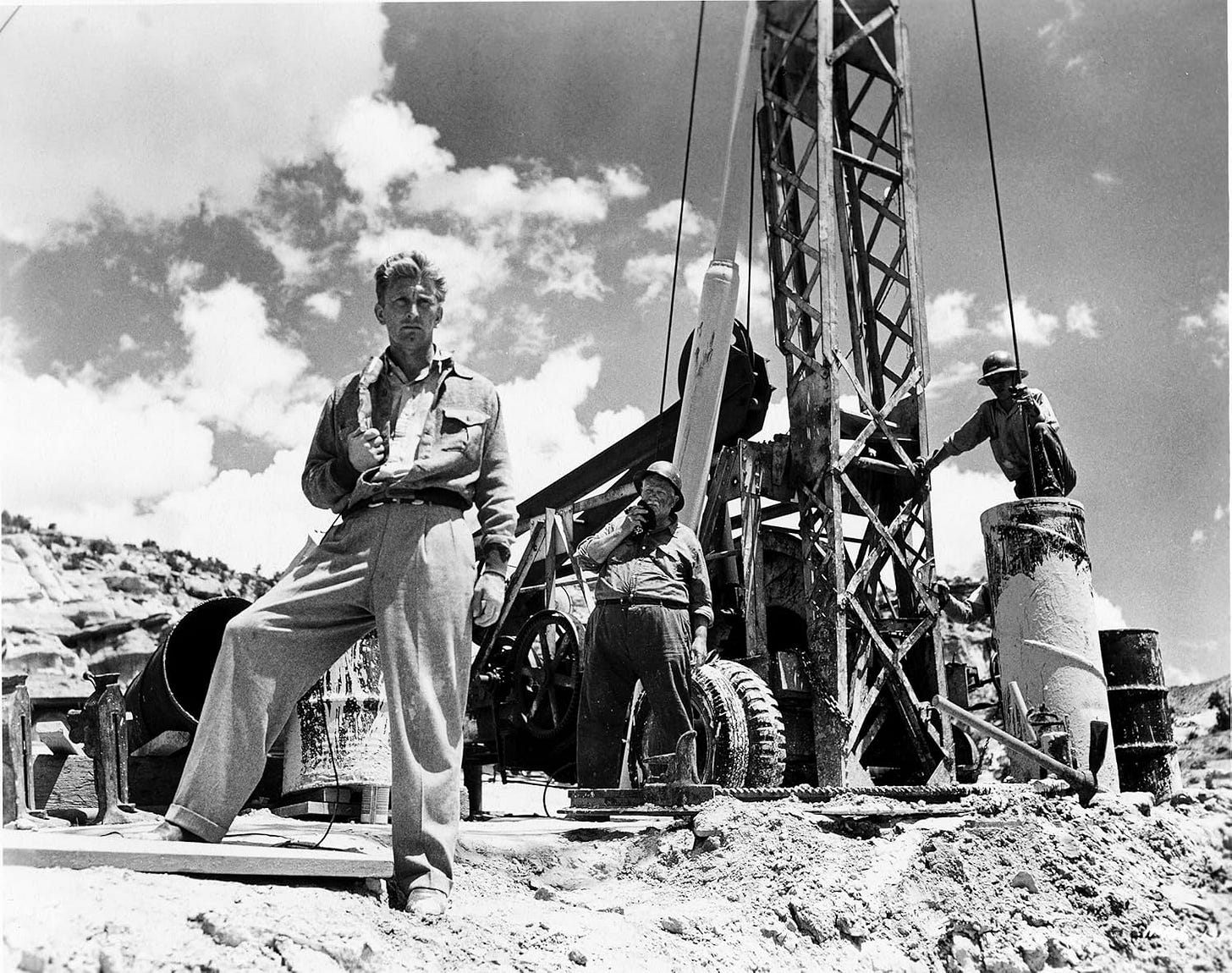
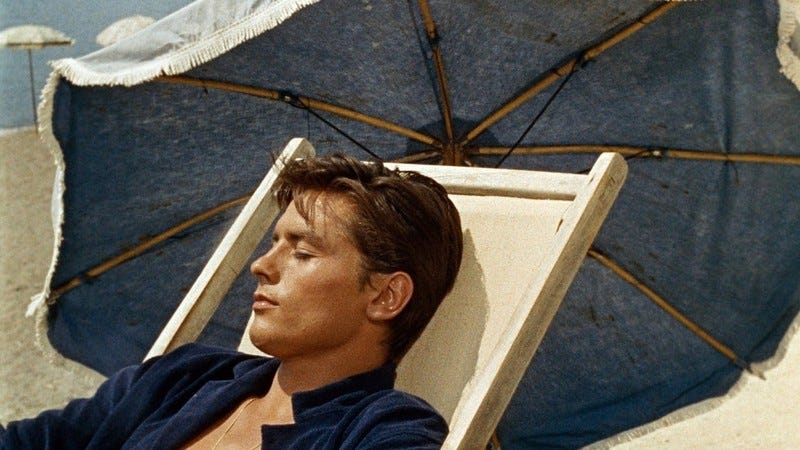



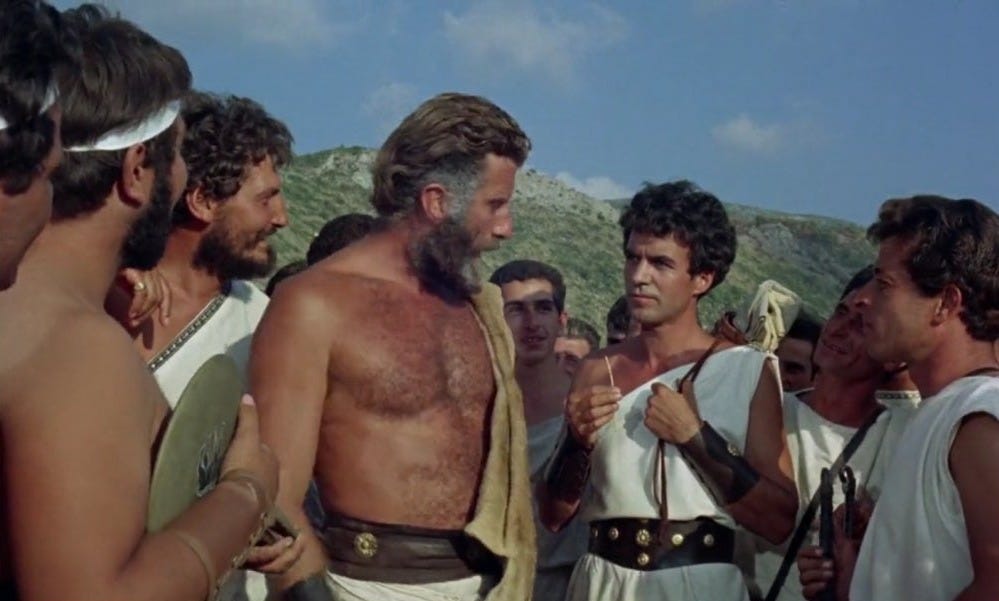
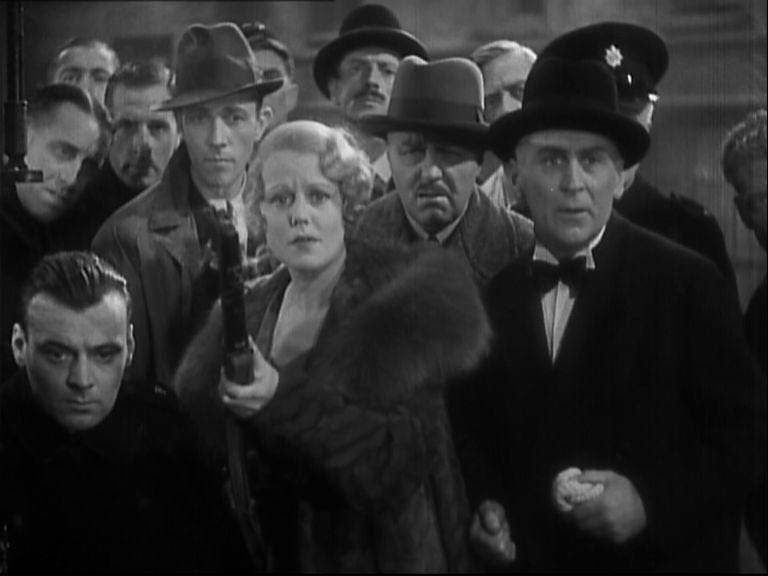
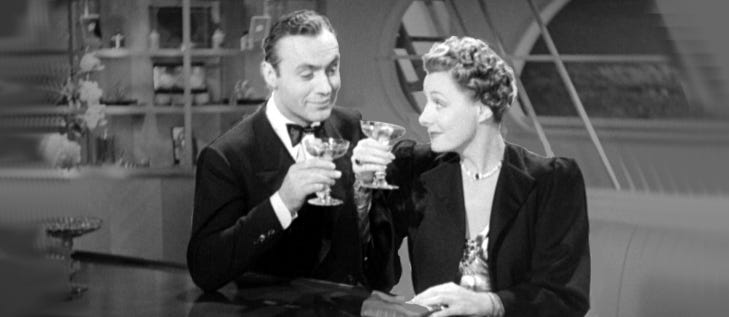
As you know, misappropriated terms can become appropriated and official eventually. You know because you successfully made the case to me that "hopefully" is now officially recognized as more than just an adverb, and canonized as a synonym for "I hope," which originally was a "wrong" use.
"Impacted" is gonna get there eventually; I just know it.
Got a lot of catching up to do on these movies, although both I and my late father-in-law who was a real cold war spy found TTSS dull.
"How dare you not include this obscure film that many people haven't watched!" On a serious note, I do enjoy listicles from time to time but the absolutes can be a little irritating at times